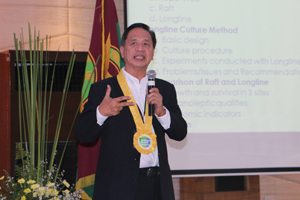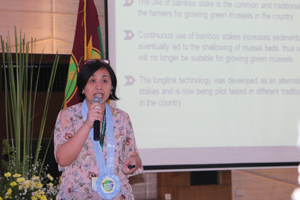
Longline, a method for mussel production that is cost-effective in producing high quality mussel, provides higher production and return of investment (ROI) and is more environment-friendly.
This information was shared during the First Philippine Mussel Congress organized by the University of the Philippines Visayas (UPV) through the support of the Philippine Council for Agriculture, Aquatic and Natural Resources Research and Development of the Department of Science and Technology (DOST-PCAARRD). The congress was held on October 25, 2018 in Iloilo City.
According to Dr. Carlos C. Baylon of UPV, longline method has a higher return on investment (ROI) of 74% and a shorter payback period of two years than the raft method with an ROI of 26% and a payback period of three years. Baylon shared this in his paper, “Grow out Culture of the Green Mussel (Perna viridis) in the Philippines: State of the Art.”

Compared with the traditional stake method, which causes heavy sedimentation in coastal areas, longline has more benefits in green mussel production. This was according to Dr. Fiona L. Pedroso of UPV.
Pedroso mentioned that specific growth rate of green mussel cultured in longline was significantly higher than those cultured in stakes, and it allowed for faster growth and attainment of marketable size. It was also more profitable since it uses durable and recyclable materials. Moreover, its environmental impact was minimal as it causes lesser sediment deposit.
Accordingly, 87% of farmers interviewed in the study were willing to fully adopt the longline technology.
These research results were presented in Pedroso’s paper, “Pilot Testing of Longline Method for Green Mussel (Perna viridis) Culture in Traditional Areas.”
